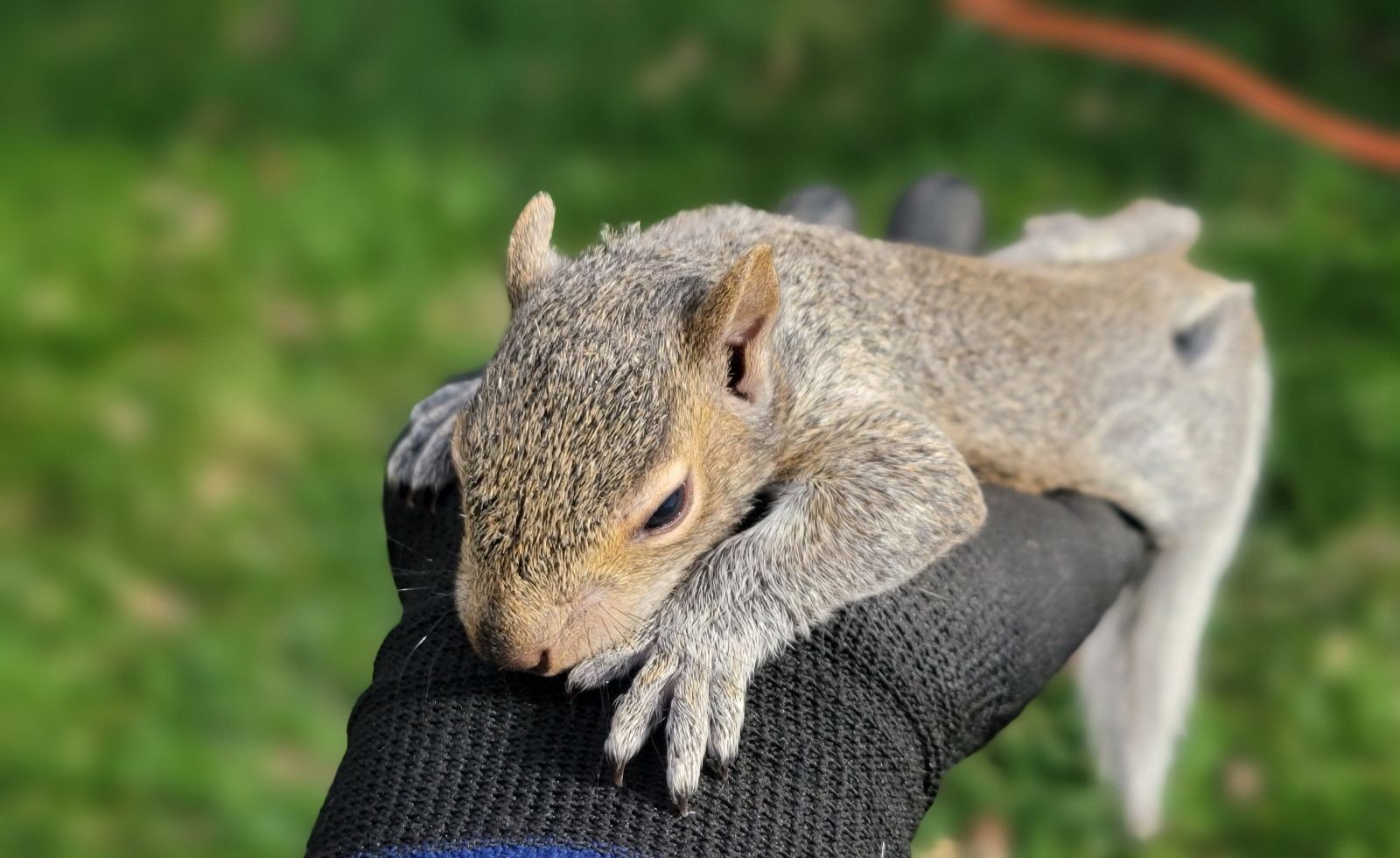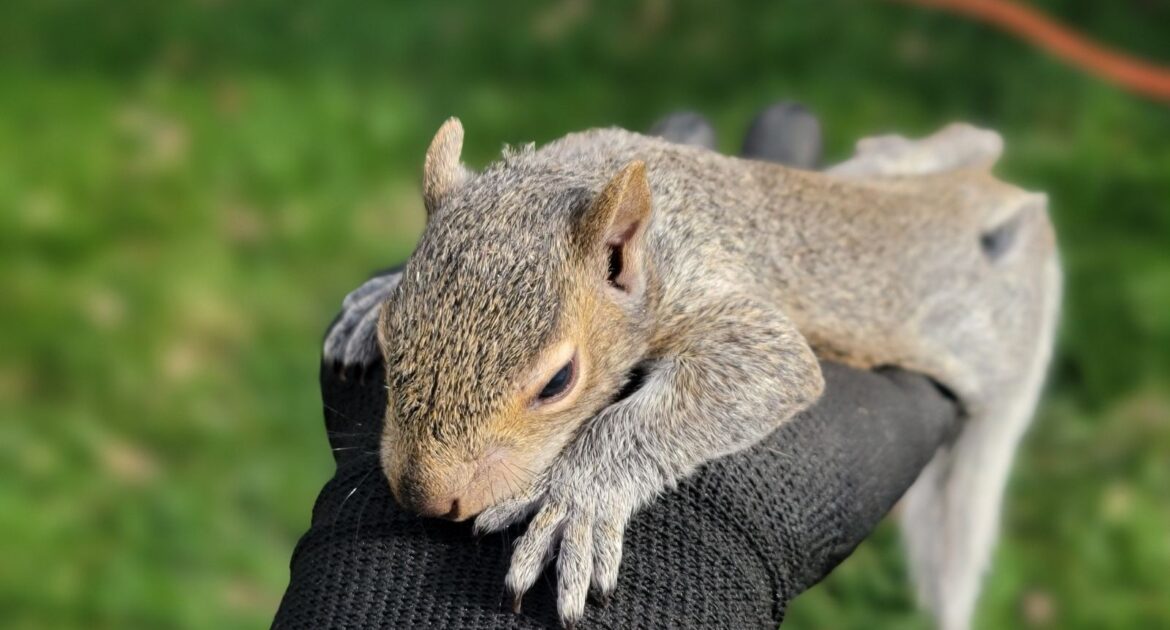When it comes to protecting your home, squirrels are likely not the first threat you think of. However, as we’ve seen time and again, squirrel damage to home structures can be both extensive and costly. Beyond being a nuisance, they can cause everything from physical destruction to health and safety hazards. It’s important for homeowners to understand the potential risks these animals pose, recognize the signs of squirrel infestation, and learn how to prevent squirrel property damage before it’s too late.
Squirrel Damage to Your Home
One of the most significant issues squirrels cause is property damage through relentless chewing. Thanks to their constantly growing teeth, they gnaw on nearly anything they encounter to keep their teeth sharp and manageable. This becomes a major problem when your home becomes their target.
Attic Damage
Squirrels are notorious for invading attics. They chew through roofing materials, soffits, and vents to gain entry. Once inside, they use insulation, cardboard, and paper to build messy nests, which weakens the attic’s insulation and energy efficiency. Even worse, they often soil these materials with urine and feces, creating health risks and requiring costly cleanup and replacement.
Attics also house many essential systems, like electrical wiring and ductwork. Gnawed wires can lead to electrical shorts or fire hazards, while damaged ducts can compromise your home’s heating and air conditioning. These are critical risks we see often, and they’re not issues to take lightly.
Roof-Line Destruction
Squirrels often target roof edges, fascias, and eaves. Their sharp teeth allow them to puncture shingles, aluminum, and even vinyl siding. Left unchecked, this damage can lead to water intrusion, wood rot, and structural weakening. Additionally, squirrels often nest in gutters, clogging them and causing water to overflow onto siding and foundations, which may lead to long-term water damage.
Walls and Crawl Spaces
If they can get into your attic, squirrels can also find their way into your walls. Once inside, they gnaw through wooden supports, drywall, and more wiring. Leftover nesting material in wall voids provides the perfect environment for mold, mildew, and unpleasant odors. Failure to address these problems can significantly impact your home’s structural integrity and living conditions.
The best way to avoid these extensive damages is to address squirrel infestations early and adequately secure your home against potential entry points.
Health and Safety Risks From Squirrel Infestations
Beyond the visible destruction, squirrels pose several hidden risks to your home’s safety and your family’s health. These potential hazards make understanding and preventing squirrel property damage all the more important.
Fire Hazards
One of the most concerning risks is the potential for electrical fires caused by gnawed wires. Squirrels are drawn to wiring, and the fraying or severing of wires can create dangerous sparks. Combined with the dry, flammable nesting materials in your attic or walls, this is a recipe for disaster.
Air Quality Issues
Squirrels often urinate and defecate in spaces where they nest, contaminating attic insulation and other materials. Over time, these areas become breeding grounds for bacteria, posing a risk to the air quality in your home. This is particularly concerning for individuals with allergies or respiratory conditions.
Fleas and Parasites
Squirrels carry fleas, ticks, and other parasites that can be transferred to your pets or even into your home. This issue exacerbates the infestation risks, as it introduces additional health concerns for your family.
Tackling these hazards head-on by recognizing the signs of squirrel infestation and taking preventive measures is vital.
Signs of Squirrel Infestation
Knowing what to watch for when it comes to squirrel activity enables homeowners to act quickly before the situation gets out of control. Here are some common signs of a potential squirrel problem:
- Scratching or Scampering Sounds: Squirrels are most active during the day, particularly in the early morning or late afternoon. If you frequently hear scratching, scampering, or chewing sounds in your attic or walls, it’s a strong indicator of their presence.
- Gnaw Marks and Entry Holes: Look for bite marks around potential entry points like soffits, vents, and fascia boards. You might also notice small holes chewed into your roof, siding, or near eaves.
- Droppings or Urine Stains: Squirrel droppings in the attic or around your property, along with yellowish urine stains, are clear signs of infestation.
- Damaged Wiring or Insulation: Pay attention to any frayed wires, chewed insulation, or unusual odors in your attic. These are often signs squirrels have made themselves at home.
- Tracks and Nests: Squirrels might leave tracks in dusty areas. Their nests, often made from torn insulation, leaves, and other materials, are another dead giveaway.
Identifying these signs allows homeowners to handle infestations proactively, preventing costly repairs down the road.
How to Prevent Squirrel Property Damage
Preventing squirrels from entering your home starts with taking proactive measures to reduce their access and appeal. While it’s impossible to eliminate all squirrels from your area, these strategies can help safeguard your property:
- Trim Tree Branches: Squirrels use branches to gain access to your roof, so keep them trimmed at least six feet away from your home.
- Inspect and Seal Entry Points: Regularly inspect your home for potential entry points, including gaps in soffits, vents, and fascia boards. Seal these openings with heavy-duty materials like galvanized steel mesh.
- Protect Vents and Chimneys: Install sturdy vent covers and chimney caps to prevent squirrels from entering through these vulnerable areas.
- Manage Food Sources: Clear away fallen fruits, nuts, and birdseed that might attract squirrels to your yard.
- Gutter Maintenance: Keep gutters clean, as squirrels often use them for nesting. Consider installing gutter guards if nests are a recurring problem.
Implementing these measures can significantly reduce the chances of squirrels damaging your home or property.
Skedaddle’s Humane Squirrel Removal Services in Milwaukee
At Skedaddle, we specialize in providing professional, humane squirrel removal services that prioritize the well-being of both homeowners and wildlife. Our approach begins with a thorough inspection of your property to identify entry points, nesting areas, and potential vulnerabilities. Using proven wildlife exclusion techniques, we safely and efficiently remove squirrels while ensuring no harm comes to the animals.
- Skedaddle focuses on long-term solutions for squirrel removal.
- Entry points are sealed with durable materials to prevent re-entry.
- We repair and address any damage caused by squirrels.
- Affected areas are cleaned and decontaminated to protect your family’s health.
- Our trained professionals deliver reliable, service-oriented care.
- We prioritize humane treatment of wildlife and respect for the environment.
- Skedaddle ensures effective squirrel control and lasting home protection.
Keep Your Property Safe
Squirrels may look cute, but their potential to destroy the structural integrity of a home and create health hazards is nothing short of significant. From attic damage to health risks, understanding the dangers they pose is the first step in protecting your Milwaukee home—whether you live near the bustling Energy Exchange or the peaceful shores of Lake Michigan.
The good news is that there are practical, preventive steps you can take to keep squirrels out for good. If you’re dealing with squirrel issues or want to secure your home against future intrusions, Skedaddle is here to help. Our team has the experience and expertise to implement humane, effective solutions tailored to your property’s needs. Give us a call today and put an end to your squirrel worries once and for all.




